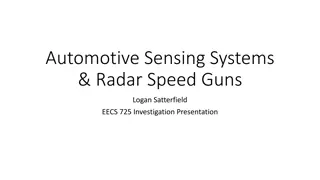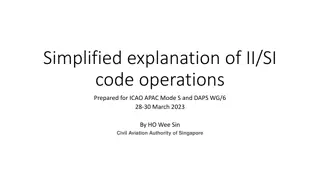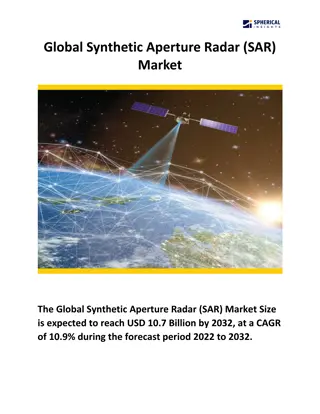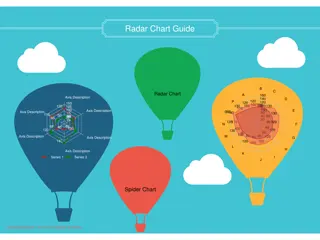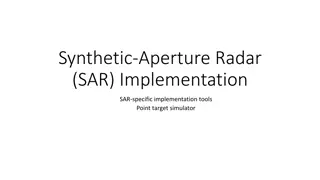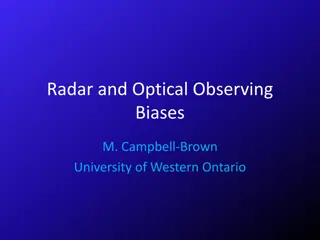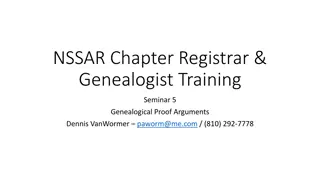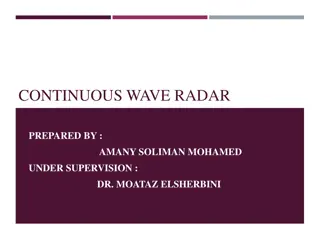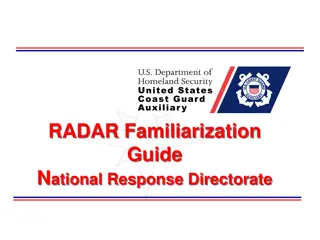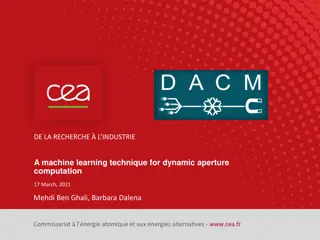Understanding Synthetic Aperture Radar (SAR) Modes and Implementations
Explore the world of Synthetic Aperture Radar (SAR) through various modes and implementations, covering topics such as SAR coordinate systems, pulse compression, range-Doppler algorithms, Born approximation, SAR scene simulation, and more. Dive into the distinctions between unfocused SAR and focused SAR, including subaperture SAR techniques for enhanced target measurement. Get insights into SAR reconstructions and operational considerations for SAR applications.
Download Presentation

Please find below an Image/Link to download the presentation.
The content on the website is provided AS IS for your information and personal use only. It may not be sold, licensed, or shared on other websites without obtaining consent from the author. Download presentation by click this link. If you encounter any issues during the download, it is possible that the publisher has removed the file from their server.
E N D
Presentation Transcript
Synthetic-Aperture Radar (SAR) Implementation SAR Modes
Announcements Turn in homework via email paden@ku.edu (.zip file of all files including a report and code).
Agenda Week 1 Tools Re-sampling methods Pulse compression Signal Model (point target simulator and matched filter) Array Processing view of SAR Born Approximation, SAR Modes, SAR Coordinate System Week 2 Analytical forms continued SAR matched filter approximations Range Doppler Algorithm, Chirp Scaling Algorithm, and F-k Migration
Definitions for homework Range line is one recorded waveform (i.e. usually the received scattering from a single transmit event). Phase history means the SAR raw data. It should be a matrix where each column is one range line. It is the phase and magnitude even though it says phase history.
Born Approximation The total field for scattering is taken to be the incident field. This approximation works when the scattered field is small relative to the incident field. We can ignore interaction between targets so that targets can be treated as linear sources. This means that we can simulate each target independently and then sum the results from each individual target to construct the complete scene response. What kind of targets will this fail for?
SAR Modes (Nyquist View) Stripmap SAR Most demanding: requires fully sampled aperture ScanSAR Limits resolution and allows large gaps in aperture. Used to increase swath. Spotlight SAR Limits scene along-track extent and allows reduced spatial sampling. Used to increase along-track resolution and SNR for a given PRF.
Unfocused SAR versus Focused SAR Unfocused SAR: narrowband array and plane wave approximation (no range migration AND plane wave)
Unfocused SAR versus Focused SAR Subaperture SAR: measure target from multiple look angles, akin to ScanSAR only additional looks in the same swath are gained instead of a wider swath. Can be combined with both unfocused SAR and focused SAR.
Unfocused SAR versus Focused SAR Subaperture SAR: measure target from multiple look angles, akin to ScanSAR only additional looks in the same swath are gained instead of a wider swath. Can be combined with both unfocused SAR and focused SAR.
SAR Coordinate System Cylindrical coordinate system and slant plane
Raw data with rect time window and boxcar spatial beam pattern.
Pulse compression with rect time window, boxcar frequency domain window, and boxcar weighted spatial beam pattern.
Time domain correlation and with rect time window, boxcar frequency domain window, and boxcar weighted spatial beam pattern.
Raw data with 0.1 Tukey time window and Hanning weighted spatial beam pattern.
Pulse compression with 0.1 Tukey time window, Hanning frequency domain window, and Hanning weighted spatial beam pattern.
Time domain correlation and with 0.1 Tukey time window, Hanning frequency domain window, and Hanning weighted spatial beam pattern.
Peak delay (just estimating delay to the closest pulse compressed sample)





